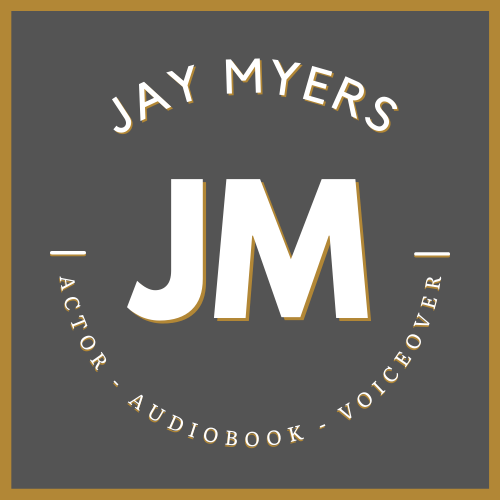What is the BEST microphone for Voiceover?
The short answer? The mic you’ve got in front of you. Yeah a bit of a dodgy answer, but what I mean by that is:
you don’t need a specific microphone
You don’t need a fancy microphone,
and you definitely don’t need an expensive microphone…
…to get started in VoiceOver, to be considered a professional, and to build a successful career and business in the field. Ultimately, you-the voice behind the mic-are vastly more important than any gear you might use. So if you find yourself in knots trying to decide what the proper mic for you is, what’s the BEST mic?! Am I making the wrong choice? Well, kick all of that to the curb, because whatever you end up with will get the job done for certain.
Now, with that said there are of course industry standards, more popular mics than others, and some points to consider that may land you in the ballpark of what might be the best mic for YOU at this moment in your career.
Check out this video, or read on for more specifics and some comparisons between some industry favorites for VoiceOver.
Consideration 1: USB vs XLR
If you’re not familiar these are two types of microphones that simply connect to your computer in different ways. USB plugs straight in, while an XLR requires some additional gear, namely an audio interface, to well interface with your computer.
In my opinion and experience, a USB mic is a great option if you’re not sure if Voiceover is something you’ll want to do long term, if it’s a hobby (a podcast with friends, or narrating your own YouTube videos, etc), or if you’re an actor who gets a VO audition once in a blue moon and would prefer something other than their phone to record into, or if you’re itching to get into the game and have a restrictive budget. All of these, or any variation therein—I think would make a USB mic a good option.
However, if you have aspirations to make VO a full-time, part-time, or serious side hustle where you’ll hope to be competitive, skip the USB and go straight for an XLR microphone—for a few reasons:
Audio Quality — audio professionals will expect high quality recordings that an XLR mic can provide.
Longevity — A decent XLR mic will last you years. Colleagues of mine started with $100 mics (~$300 for their whole recording setup), using them to build and sustain really successful careers for years.
Saves Money in the Long Run — A good USB mic will most likely be around $200-$250, while an entry level XLR setup can cost ~$300-$400. If you’ll just have to upgrade in a few months anyway, just invest a little more upfront if you can. Additionally, audio gear has tremendous resale value, so if you decide VO isn’t for you, you can more than likely sell it off for a significant potion of your investment.
Consideration 2: Condenser vs Dynamic
These are two different types of microphones that specialize in different things. A dynamic microphone excels in noise rejection, and is a great option if your space isn’t very well treated and if you experience a fair amount of noise interrupting your recordings (i.e. you live by a noisy street, loud neighbor, flight path, etc.).
By contrast, a condenser microphone is designed to be extremely sensitive. So while it will struggle to cancel out background noise, it is much better than dynamic mics in terms of capturing the detail and nuance in your voice and performance. For this reason, in most use cases a condenser mic is the way to go for VO artists. If you can invest in your space and beef up your sound treatment in order to do so, I’d highly recommend it.
Consideration 3: Your Budget
It’s a personal thing, and again you don’t need to spend much to get started. I’d also encourage anyone-regardless of budget-to look for used gear. Most of my microphones I bought second hand and they all sound beautiful. (Just make sure the source is reputable.)
The curve of quality looks a bit like this:
I’d say at minimum expect to invest $100 in your mic. Below that threshold, and things get dicey. (Check out the Audio Technical AT 2020)
Jumping from $100 to ~$300 and you’ll see a dramatic jump in quality. For this reason if you can afford it, I’d say this is a great range to start off in. (Look at the Rode NT-1)
Between $500-$800, you begin to see mics that are ‘professional’ quality—in that they begin to have studio reputations outside of home recording. (I like the Shure KSM 32, and the Neumann TLM 102)
Once you break $1000 you’re into the elite professional microphone range. The Neumann TLM 103, Sennheisser MKH 416, AKG C414, and Austrian Audio OC818 are all great choices here.
Beyond that price point, you enter into ‘boutique zone’ where the difference in quality isn’t really a thing, and it all boils down to taste. Here the Neumann U87ai is somewhat the reigning VO mic champion in many respects.
I hope this was helpful for you, and if you’d like to hear comparison samples of various different mics on both a male voice and female voice, and my specific thoughts on them check out the video linked above. (The mics in question are the Neumann TLM 102, TLM 103, U87ai, Sennheiser MKH 416, Earthworks ETHOS, and Shure SM7b.)
As always if any questions pop to mind please don’t hesitate to drop me a line, and I’ll get back to you when I can.
